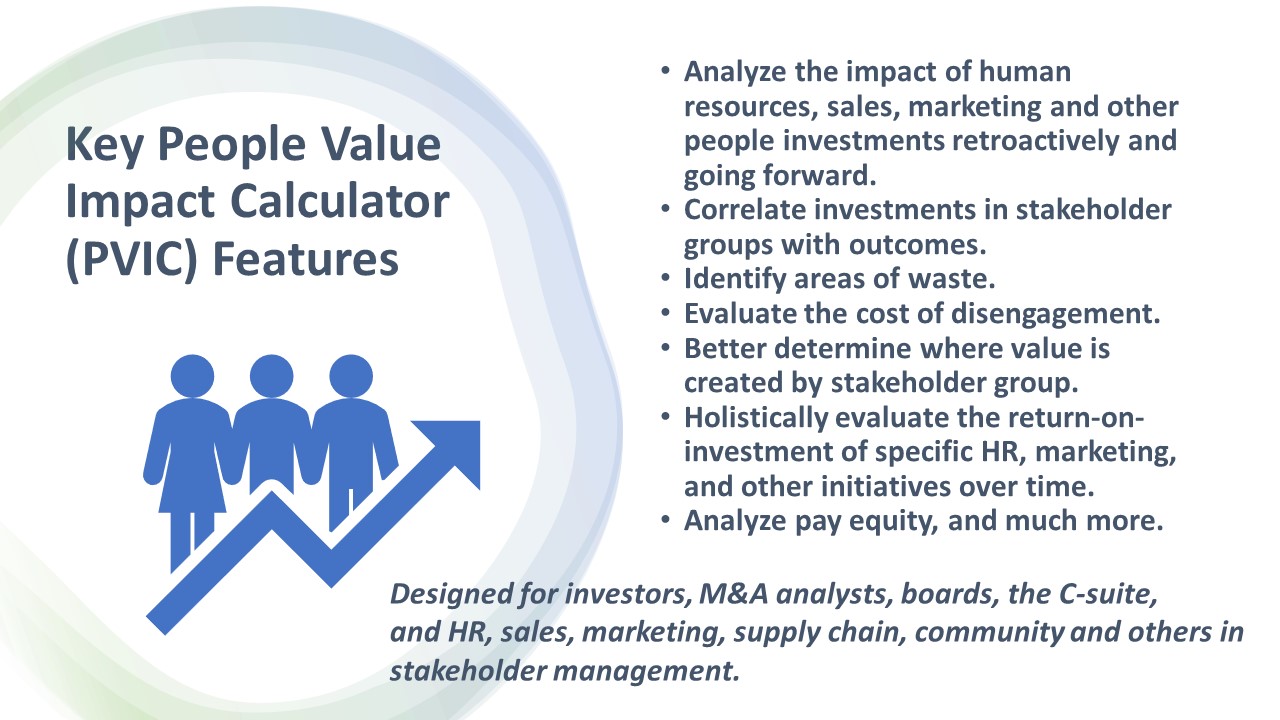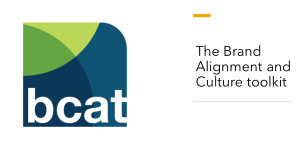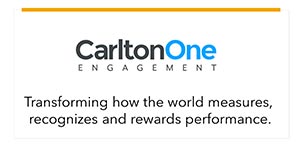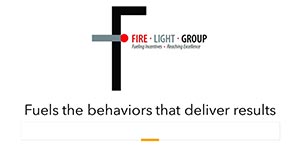How ICEE Service Measures the Impact of Incentives, Rewards, Recognition and Other Engagement Processes
Click here for a 30-minute Enterprise Engagement Alliance YouTube demonstration or scroll down for an overview. The ICEE and its services are now under the general management of Darwin Hanson of TM Evolution. The Enterprise Engagement Alliance offers training and access to the the PVIC technology for professionals and organizations that which to manage these processes on their own.
Background: Originally Developed to Identify Waste and Make Better Decisions
Features: Track, Calculate and Correlate Whatever Data You Wish
Sample Reports by Stakeholder Group
The Process
The EEA Business Model
Many companies in all aspects of engagement, incentives, rewards, recognition, motivational events, etc., claim that their services help improve engagement, reduce turnover, improve customer service, but what is their actual impact on value creation? A recent report by HR.com recently found that 80% of human resources executives surveyed are satisfied with their recognition and rewards efforts; yet, under 50% reported having structured programs or formal measurement processes based on organizational impact or value creation. Similarly, various surveys put confidence in the ability to clearly measure marketing at below 25%, despite the availability of free and comprehensive marketing measurement tools provided by such organizations as the Harvard Business School's online service.
This EEA service, training program, and measurement application for practitioners and solution providers enables organizations to rapidly and inexpensively draw upon commonly available data that can be used to measure the impact of almost any organizational process involving people, according to Darwin Hanson, TM Evolution, Founder and CEO of this compensation firm and creator of the software. "We look forward to working with professionals in all areas of enterprise engagement seeking to seriously measure the value they create for clients, whether in rewards, recognition, motivational events, etc. In the current economic climate especially, organizations cannot afford to ignore the potentially large waste embedded in people processes that often can be easily mitigated. We hope to help build a community of solution providers who can provide these type of independent impact valuations all around the world."
Management and consultants in finance, mergers and acquisitions, sales, customer service, and other areas involved with people engagement no longer
 need guess about the impact of their efforts, he says. The People Value Impact Calculator (PVIC) from Tarrytown, NY-based Enterprise Engagement Alliance and his Brainerd, MN-based compensation firm TM Evolution, he believes, make it transparent and easy for the C-suite and management overseeing all stakeholder groups to not only measure the ongoing impact of their efforts but to have their efforts independently measured to ensure objective analysis. Or, organizations can learn the processes and access the tools to do it themselves, adds Bruce Bolger, EEA Founder.
need guess about the impact of their efforts, he says. The People Value Impact Calculator (PVIC) from Tarrytown, NY-based Enterprise Engagement Alliance and his Brainerd, MN-based compensation firm TM Evolution, he believes, make it transparent and easy for the C-suite and management overseeing all stakeholder groups to not only measure the ongoing impact of their efforts but to have their efforts independently measured to ensure objective analysis. Or, organizations can learn the processes and access the tools to do it themselves, adds Bruce Bolger, EEA Founder. Either way, the EEA provides the services, training and tools necessary for companies and organization to transparently use commonly available historical data not only to evaluate past results but to create a benchmark for future efforts, according Bolger.
He explains that a "key advantage of the platform is to enable solution providers and/or organizations to have their conclusions easily audited for independent validation. Each solution provider has a legitimate and often unique approach to achieve purpose, goals, and objectives, and even the research tools to validate it, but it helps to have credible third-party validation service or process using a transparent platform and system. There are no hidden recipes: just practical metrics used commonly in total quality management and related processes and included in ISO 30414 human capital and ISO 10018 people engagement standards."
Click here for an example of how PVIC is used in company valuations to identify risks and opportunities in customer and employee management.
For a recorded demo of the technology, click here. In 30 minutes, Bolger and Hanson provide an overview and background; the types of stakeholder management and metrics that can be evaluated and the template used to upload it; an example of a company with data on the C-suite, customers, employees, and supply chain partners, the process for generating a report correlating different types of data, and a series of saved reports.
PVIC is based on a technology developed over a decade ago by TM Evolution to help its clients in compensation make better decisions. For example, it recently used the technology to help a mid-size company analyze the fairness of its compensation across all key demographic groups, finding that in most cases, pay was equitable, while at the same time identifying opportunities to enhance diversification of the sales force, according to Hanson. "I would encourage any company or solution provider using this platform to come up with the metrics that make the most sense for their organization, just as I have for our clients in compensation."
He cautions, "In drawing conclusions between causal and correlative factors--a tactic with direct results rather than one related to results--it's extremely important to be careful about the quality of the data and the time period, situation, and stakeholders involved. Having this information is like driving with headlights in the fog--you still have to be cautious. It's better to have information on inputs and outputs than to only have information on inputs, but expert analysis can be valuable."
Background: Originally Developed to Identify Waste and Make Better Decisions
The use of PVIC to measure the impact of investments in people was driven by a series of Enterprise Engagement Alliance webinars held in fall 2023 identifying large amounts of waste in marketing, human resources, job design, customer service, and labor management relations. After evaluating the TM Evolution software, the EEA determined that the platform could do much more, explains Bolger. “PVIC is specifically designed not only to root out waste and identify inadequate investments in people but to help organizations correlate specific and general engagement initiatives to their specific, goals, and objectives, financial or otherwise, as well as identify specific areas of weakness they need to address."
During the demonstration, Hanson and Bruce Bolger, EEA founder, display a template that can be used by any size organization for either an enterprise view or one related specifically to different stakeholder groups, including the C-suite, human resources, sales, marketing, and customer services, or whatever group an organization desires to analyze. According to Bolger, it took less than five days for one full-time equivalent to compile this report based on an actual company he worked for. While the demo provides a complete stakeholder report consistent with the European Union Corporate Sustainability Reporting Directive and ISO human capital and people engagement standards, it can be used by organizations to upload almost any information desired into the PVIC platform for analysis, including ways it can be used to track both financial impact as well as effects on customers, employees, and other distribution partners, explains Hanson. Reports can be saved for future analysis, and data can be updated any time by way of an easy data upload process, he adds.
The spreadsheets are organized by stakeholder group, with the ability for organizations to set permissions restricting access to specific people, he continues. They can be populated with any qualitative and quantitative data organizations wish to use for analysis and easily updated if using the same template, enabling organizations to track results not only against financials but corporate objectives. The system is specifically designed to support the new European Union Corporate Sustainability Reporting Directive (CSRD), so that organizations can track the metrics over time in relationship to the achievement of their financial and other organizational goals.
Features: Track, Calculate and Correlate Whatever Data You Wish
During the EEA video show, Hanson shares just a few of the countless reports he says analysts can generate on the fly, including: customer engagement return on investment versus revenues; the impact of a digital media campaign on sales; CEO pay to book value and share price performance; the connection between human capital return on investment and employee engagement, the connection between diversity, equity, and inclusion and organizational outcomes. To create reports, authorized administrators populate the data on a pre-approved template customized for each organization's needs; upload it on to the platform; and then can begin selecting different criteria and timeframes to correlate and save as reports for future use.
Applications include:
- Evaluating the impact of current and past investments in human resources, sales, marketing, customer service and other engagement efforts to identify strengths and weaknesses.
- Analyzing and/or auditing pay equity.
- Thoroughly analyzing the sources of concrete value creation and risk in mergers and acquisitions.
- Anticipating the financial and impact on stakeholders of poor labor-management relationships or strikes.
- Quickly and holistically analyzing the impact of incentive, recognition and other programs on retention, sales, service, productivity, quality.
- Identifying the areas of business most related to short- and long-term value creation to better determine where to focus investments.
- Looking at the impact of training and investment programs on retention or human capital return on investment.
- Tracking the return-on-investment in marketing and communications efforts versus their purpose, goals, and objectives.
- Determining pay equity among management, demographic and other groups.
- Independently validing internal or external stakeholder engagement reporting.
Sample Reports by Stakeholder Group
Here are just some of the reports that can easily be generated with PVIC based on available data. Stakeholders can also include shareholders, communities, volunteers and donors, literally any organizational stakeholder. Click here for suggestions for the incentive, rewards, recognition, loyalty and meetings and events fields.
1. Boards, C-Suite, Mergers and Acquisitions, Investors: Stakeholder Impact Evaluation
- Consistency of achieving specific organizational goals and objectives over time.
- Connection between executive pay, book value, stock prices, profitability, diversity and more.
- Identification of the cost and risks of customer, employee, and distribution partner turnover.
- Determination of human capital return on investment and marketing return on investment over time.
- Cost and nature of lawsuits and regulatory issues.
- Relationship between profitability, sales, and profits and employee and customer engagement scores and turnover.
- Human capital and marketing ROI; revenues and costs per customer and employee pay by demographic group.
- Turnover by type of employee, demographics, or pay.
- Impact of customer, employee, and distribution partner disengagement in terms of sales or profits.
- Relationship between human resources costs and sales, profitability, and employee engagement.
- Pay equity, turnover, and engagement by demographic group.
- Impact of incentive and recognition programs on engagement, retention, referrals, etc.
- Relationship between investments in training and development and human capital return on investment, turnover, engagement, productivity.
- The connection between employee engagement, customer engagement, and sales.
- The cost of labor disputes in terms of revenues, profits, and employee and customer engagement.
- Employee productivity.
- Cost of disengagement—impact on overall sales and profits based on engagement levels.
- Marketing return on investment.
- Impact of marketing on achieving organizational goals.
- Return on investment and impact on customer retention of customer service processes.
- Connection between specific marketing initiatives and their goals, such as increasing the sales pipeline or customer engagement levels.
- Impact of incentives or loyalty programs on sales, profitability, customer retention, referrals.
- Costs and profitability per customer.
- Connection between customer turnover and sales and profitability.
- Cost of disengagement—impact on overall sales and profits based on engagement levels.
- Revenues, costs, and profitability per channel partner.
- Channel partner marketing return on investment.
- Connection between distribution partner sales and engagement levels.
- Impact of incentives and loyalty programs on sales, profits, engagement, and turnover.
- Impact of channel partner engagement on overall sales and profits.
- Cost of disengagement—impact on overall sales and profits based on engagement levels.
The Process
Whether conducted by the EEA, or one of its agents, an advantage of this process is the ability to easily test it on one initiative before expanding to others. Based on the availability of data, the analysis can include a historic view of data in order to create a benchmark for future evaluation.
A one-hour or less complimentary meeting is held to determine if the conditions are suitable for a successful outcome. Success factors mostly include having access to appropriate data or cooperation across stakeholder groups to access such data. If conditions are suitable:
Step 1: Determine the purpose, goals, objectives, and organizational values related to the organization or specific tactic being evaluated.
Step 2: Determine the type of data available; how it will be evaluated, and how it will be shared with the EEA or its agents. Various measures can be used to make it all but impossible for even hackers to access data by never identifying the source of the data on the system.
Step 3: Once the data is available, the analysts use the established data analysis plan and PVIC tool to map out the designated impacts, correlate their results over the time period looking for causation effects, and determine the potential value created measured by concrete productivity, retention, referral, customer sales behavior, retained information, etc.
The final report includes both financial an others related to the purpose, goals, objectives, and values of the effort as well as recommendations for future value creation.
The EEA Business Model
Organizations can choose to have their processes independently audited by the EEA or an authorized agent or learn how to do it themselves using low-cost, easy to learn technology provided by the EEA, according to Bolger.1. Independent evaluation. Companies can choose to engage the EEA for a one-time independent analysis. Once the data is delivered and loaded into the PVIC system as prescribed in the planning process, it usually takes no more than 10 business days to provide a formal report. The cost depends upon the specifications determined in the planning meeting, but can be accomplished at small companies for as little as $2,500 and at large populations for $5,000 or more.
2. Do-it-yourself. The EEA curriculum membership program is designed to support professionals and solution providers seeking to bring to their clients services offering concrete value creation. A single-license platform is included in the EEA membership program for Enterprise and Engagement Solution Providers at $1,500 per year, with a one-time $300 setup and customization fee for the PVIC platform, including a training program for stakeholder management implementation. This includes a meeting to determine the specific template you would like to use to track the information relevant to you or your organization and provide basic training on how to use the platform. Additional analysis is available, as well as multi-division or multi-company licenses. Licenses are also available to non-members, the EEA says, as well as to management consulting and related firms that wish to use their own branded version of platform to support the impact of their own proprietary or other frameworks.
For More Information
Bruce Bolger
Founder, Enterprise Engagement Alliance
914-591-7600, ext. 230
Bolger@TheEEA.org
ESM Is Published by The EEA: Your Source for Effective Stakeholder Management, Engagement, and Reporting
Through education, media, business development, advisory services, and outreach, the Enterprise Engagement Alliance supports professionals, educators, organizations, asset managers, investors, and engagement solution providers seeking a competitive advantage by profiting from a strategic and systematic approach to stakeholder engagement across the enterprise. Click here for details on all EEA and ESM media services.
1. Professional Education on Stakeholder Management and Total Rewards
- Become part of the EEA as an individual, corporation, or solution provider to gain access to valuable learning, thought leadership, and marketing resources to master stakeholder management and reporting.
- The only education and certification program focusing on Stakeholder Engagement and Human Capital metrics and reporting, featuring nine members-only training videos that provide preparation for certification in Enterprise Engagement.
- EEA books: Paid EEA participants receive Enterprise Engagement for CEOs: The Little Blue Book for People-Centric Capitalists, a quick implementation guide for CEOs; Enterprise Engagement: The Roadmap 5th Edition implementation guide; a comprehensive textbook for practitioners, academics, and students, plus four books on theory and implementation from leaders in Stakeholder Management, Finance, Human Capital Management, and Culture.
2. Media
- ESM at EnterpriseEngagement.org, EEXAdvisors.com marketplace, ESM e–newsletters, and library.
- RRN at RewardsRecognitionNetwork.com; BrandMediaCoalition.com marketplace, RRN e-newsletters, and library.
- EEA YouTube Channel with over three dozen how-to and insight videos and growing with nearly 100 expert guests.
3. Fully Integrated Business Development for Engagement and Total Rewards
Strategic Business Development for Stakeholder Management and Total Rewards solution providers, including Integrated blog, social media, and e-newsletter campaigns managed by content marketing experts.
4. Advisory Services for Organizations
Stakeholder Management Business Plans; Human Capital Management, Metrics, and Corporate Sustainability Reporting for organizations, including ISO human capital certifications, and services for solution providers.
5. Outreach in the US and Around the World on Stakeholder Management and Total Rewards
The EEA promotes a strategic approach to people management and total rewards through its e-newsletters, web sites, and social media reaching 20,000 professionals a month and through other activities, such as:
- Association of National Advertisers Brand Engagement 360 Knowledge Center to educate brands and agencies.














